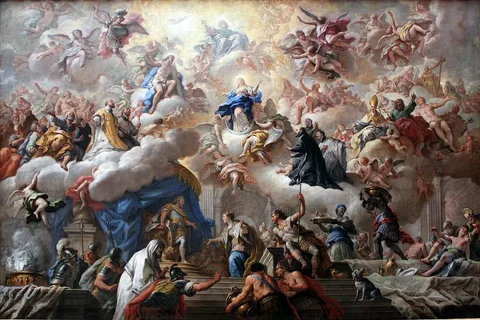A Brief Overview of Art History: A Journey Through Time and Expression

Art history is the study of the visual arts across different cultures and periods, revealing how artistic expression has evolved and reflected societal changes throughout time. From prehistoric cave paintings to contemporary installations, art history encompasses a vast array of styles, techniques, and meanings that tell the story of humanity’s creative journey.
Prehistoric Art
The earliest known artworks date back to the Upper Paleolithic period, around 40,000 years ago. Cave paintings, such as those found in Lascaux, France, depict animals and hunting scenes, serving as a window into the lives of early humans. These artworks reflect not only aesthetic values but also cultural beliefs and rituals, suggesting a deep connection between art and spirituality.
Ancient Civilizations
As civilizations emerged, so did more sophisticated forms of artistic expression. In ancient Egypt, art was deeply intertwined with religion and the afterlife. Monumental architecture like the pyramids and intricate tomb paintings depicted gods, pharaohs, and the journey to the afterlife.
In Greece, the classical period (5th to 4th centuries BCE) brought about significant advancements in sculpture and architecture. The Greeks emphasized humanism, proportion, and beauty, with notable works like the Parthenon and sculptures by Phidias and Praxiteles celebrating the human form and intellect.
The Middle Ages
Following the fall of the Roman Empire, the Middle Ages (approximately 500 to 1400 CE) saw a shift in artistic focus, primarily towards religious themes. Byzantine art emphasized spiritual representation, while Gothic cathedrals showcased stunning stained glass, intricate sculptures, and towering spires. The period also saw the rise of illuminated manuscripts, combining text and artistry in a unique manner.
The Renaissance
The Renaissance (14th to 17th centuries) marked a profound rebirth of classical ideas, humanism, and artistic innovation. Artists like Leonardo da Vinci, Michelangelo, and Raphael pushed the boundaries of perspective, anatomy, and composition. The invention of linear perspective transformed the depiction of space, making works like "The Last Supper" and the "Sistine Chapel ceiling" masterpieces of the era.
Baroque to Romanticism
The Baroque period (17th to early 18th centuries) was characterized by dramatic lighting, intense emotions, and grandeur. Artists like Caravaggio and Rembrandt utilized chiaroscuro to create depth and highlight emotional narratives.
The Romantic movement (late 18th to mid-19th centuries) emphasized individualism, emotion, and nature. Artists such as Caspar David Friedrich and J.M.W. Turner explored themes of the sublime and the human experience, often reacting against the rationalism of the Enlightenment.
Modern Art
The late 19th and early 20th centuries saw the rise of modern art, with movements like Impressionism, Cubism, and Surrealism challenging traditional conventions. Artists like Claude Monet, Pablo Picasso, and Salvador Dalí explored new perspectives, techniques, and the subconscious mind, leading to a broadening of what could be considered art.
Contemporary Art
Today, contemporary art encompasses a wide range of styles and mediums, often reflecting social, political, and environmental issues. Artists like Banksy and Ai Weiwei use their work to provoke thought and engage with current events, blurring the lines between art and activism.
Digital technology has also transformed the art landscape, allowing for new forms of expression such as digital art, video installations, and virtual reality experiences.
Conclusion
Art history is a rich tapestry that chronicles the evolution of human expression. By examining the artistic achievements of different cultures and eras, we gain insight into the values, beliefs, and challenges faced by societies throughout time. As we continue to create and engage with art, we are reminded of its enduring power to reflect our humanity and shape our world.
- Arts
- Business
- Computers
- Juegos
- Health
- Home
- Kids and Teens
- Money
- News
- Recreation
- Reference
- Regional
- Science
- Shopping
- Society
- Sports
- Бизнес
- Деньги
- Дом
- Досуг
- Здоровье
- Игры
- Искусство
- Источники информации
- Компьютеры
- Наука
- Новости и СМИ
- Общество
- Покупки
- Спорт
- Страны и регионы
- World


